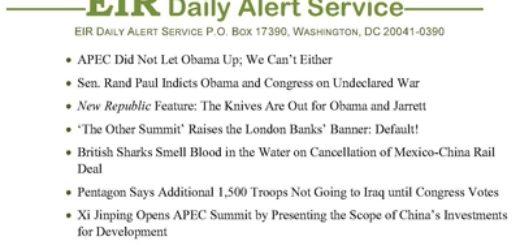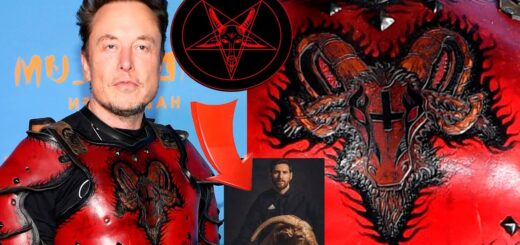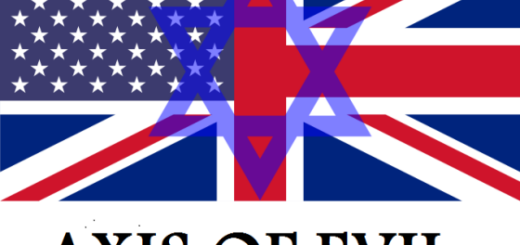EIR Daily Alert Service, FRIDAY, FEBRUARY 16, 2018
FRIDAY, FEBRUARY 16, 2018
Volume 5, Number 34
EIR Daily Alert Service
P.O. Box 17390, Washington, DC 20041-0390
Neo-Con/Neo-Lib Hysteria over China Attests to Growing Success of the New Silk Road Spirit
Admiral Harris Raises the ‘China Threat’ Before the House Armed Services Committee
British MI6 Agent Christopher Steele Ran ‘Full-Spectrum’ Subversion Operation against U.S.
Tillerson Visits Jordan and Lebanon; Remarks on Trump New Middle East Peace Plan
Iranian President Rouhani Makes First Official Visit to India
China Considers South American Bioceanic Railway Strategic
Israel Establishes Missile Corps
Russia Is Developing and Deploying Weapons Based on ‘New Physical Principles’
LNG Tanker Eduard Toll Sets New Record through Northern Route at Arctic’s Coldest Time
Small Modular Nuclear Reactors Are the Answer for U.K. Energy Future, Reports Study
China’s Belt and Road Set for Operations in Belgian Port of Zeebrugge
EU May Sanction Member States in East—for Sharing Economic Growth with Germany
South Africa’s President Zuma Resigns, but He Is Not Finished
EDITORIAL
Neo-Con/Neo-Lib Hysteria over China Attests to Growing Success of the New Silk Road Spirit
Feb. 15 (EIRNS)—Among the latest in what have been a rising number of neo-con and neo-lib howls against the alleged “threat” of China coming from trans-Atlantic figures, Adm. Harry Harris, Commander of the U.S. Pacific Command, gave testimony to Congress this week, about his view of the Chinese menace to America. He said that China’s One Belt, One Road was meant to “disgrace” the United States. In reality, this hysteria against China comes as an insane reaction to the growing success of the “Spirit of the New Silk Road” in Eurasia and globally. Under the thinking of geopolitics, success among nations—economic, scientific, cultural—is in itself viewed as a threat.
Helga Zepp-LaRouche, Schiller Institute founder and president, addressed this in many ways today, in her weekly strategic webcast. She stressed, in particular, the danger of this kind of geopolitical thinking in the thermonuclear age. She said:
“It should be clear to everybody who is not completely losing his marbles, that in the age of thermonuclear weapons, you cannot continue this [geopolitical] game, if you do not want to risk the extinction of civilization! And I think what China has proposed with their ‘win-win cooperation,’ with their offers for China and the United States to cooperate on the basis of a special relation among major powers, the offer for European countries to cooperate, that is catapulting humanity to a higher level of cooperation and reason! And I think it is so much in our self-interest—what is the problem with the United States? It’s not that China is rising; the problem is that the United States has moved away from the policies of the Founding Fathers, of Lincoln, of Franklin D. Roosevelt, of Kennedy. And the United States, indeed, could become great again, if they go back to these policies, and then they would not regard China as a threat. It’s only when the West is collapsing that there is ferment to see a rising power as a threat.
“But as the Chinese ambassador to Washington Cui Tiankai has said—and I think that that is definitely something to think about—that in history, there were 16 cases where one nation would rise, and the dominant one up to that point would be faced with such a situation: In twelve cases, there had been war, and in four cases, the rising country had just bypassed the old, dominant one, and that would have been the new situation. And the Chinese ambassador said: China does not want the twelve cases where it led to war, but they also don’t want the four cases where China would just take over and become the unipolar, dominant country; but that they want to have respect for the sovereignty of each, and that is what all the developing countries that are participating in the Belt and Road Initiative are experiencing. That’s why they cooperate, they have benefits from it, and they have, now for the first time, the chance to overcome their underdevelopment and poverty.
“And I think it would be absolutely dangerous to listen to these people who are now saying everything China represents is a threat. Because if you look at China, it’s actually a very well-functioning economic model: The people are happy, the philosophy is for the common good, and it is not a threat. And I want to keep insisting on that, because nothing would be more dangerous than if you get into a complete anti-China hysteria, anti-Russia hysteria, and the only consequence of that could be a terrible catastrophe for all of us.”
U.S. POLITICAL AND ECONOMIC
Admiral Harris Raises the ‘China Threat’ Before the House Armed Services Committee
Feb. 15 (EIRNS)—Testifying before the House Armed Services Committee Feb. 14, the Commander of the U.S. Pacific Command, Admiral Harry Harris, raised the China bogey-man by claiming that “One Belt One Road is, in fact, much more than just an economic engine that China is undertaking.” For years now, Admiral Harris has been on a crusade to point out the threat that China ostensibly poses to the West’s navies operating around the world. On Feb. 12, New York Times reported, “President Trump has said he plans to nominate Adm. Harry B. Harris Jr., the commander of the United States Pacific Command and a vocal critic of China’s military expansion in the region, as ambassador to Australia.” In other words, the Trump Administration is planning to shunt off the Admiral to Down Under to cool his heels.
“Anything you put to improve the quality of life for folks through trade is a positive. But I think also that OBOR seeks to displace the United States and our friends and allies in the region, in the Indo-Pacific region, by China,” Harris said. “It is a concerted, strategic endeavor by China to gain a foothold and displace the United States and our allies and partners in the region,” he said. “One needs to look at the bases and places where China is putting its emphasis to see the realization of this,” he said. “They are in a position today to influence the shipping routes in the Strait of Hormuz, in the Gulf of Aden, the Red Sea which means the Suez Canal, and also in our hemisphere in the Panama Canal,” he said.
“Also, finally in the Strait of Malacca, all those global chokepoints are under pressure from China’s One Belt, One Road initiative,” Harris said.
British MI6 Agent Christopher Steele Ran ‘Full-Spectrum’ Subversion Operation against U.S.
Feb. 15 (EIRNS)—In an excellent article posted at the American Conservative today, 24-year State Department veteran Peter Van Buren exposes exactly how the highly-skilled British intelligence operative Christopher Steele has managed to subvert U.S. institutions and catalyze a wild attempt to remove an elected President from office or worse. The article is headlined, “Christopher Steele: The Real Foreign Influence in the 2016 Election?”
“Steele, who is British, did far more than simply provide opposition research to the Democratic National Committee. He was able to make sure it reached the most influential people possible in politics, media and government to shape and influence the growing narrative of the 2016 presidential election. In other words, as a skilled professional intelligence officer, Steele ran a full-spectrum information operation against the United States. One could even call it information warfare.
“This is what separates his work creating the dossier (which a decent journalist with friends in Russia could have done) from his work insinuating the dossier into the highest reaches of American government and political society. For that, you need a real pro, an intelligence officer with decades of experience running just that kind of operation. Looking for foreign interference in the 2016 election? Let’s take a closer look at Christopher Steele.
“Steele’s skill is revealed by the now familiar Nunes and Grassley memos, which show he used the same set of information in the dossier to create a collaboration loop, every intelligence officer’s dream, which is his own planted information used to surreptitiously confirm itself, right up to the point where the target country’s own intelligence service re-purposed it as evidence in the FISA (Foreign Intelligence Surveillance Act) court.”
Van Buren goes on to report much more. Steele planted an anonymously-sourced press leak to validate his dossier for the FBI and others. Working as a supposed clandestine FBI source, he succeeded in getting the FBI to disclose to him its investigation of George Papadopoulos, and then used that information to buttress his dossier. Then-DOJ official Bruce Ohr and his wife Nellie Ohr, who worked for Fusion GPS, apparently served Steele as private information-channels into the DOJ, where they not only provided further fake confirmation of the lies in the Steele dossier—but could also tell Steele what questions were being asked at Justice. Sen. John McCain and the State Department were folded into Steele’s information warfare.
“The Washington Post characterized Steele as ‘struggling to navigate dual obligations—to his private clients, who were paying him to help Clinton win, and to a sense of public duty born of his previous life.’ But the Washington Post has no idea how intelligence officers work. Their job is to befriend and engage the target to carry out the goals of their employer. When they do it right, the public summation is a line like the Post offered: you never even knew you were being used,” Van Buren writes.
Van Buren closes by raising that some “have raised questions about Steele’s status as ‘retired’ from British intelligence, as the lines among working for MI6, working at MI6, and working with MI6 are often times largely a matter of semantics” (emphasis in original).
Tillerson Visits Jordan and Lebanon; Remarks on Trump New Middle East Peace Plan
Feb. 15 (EIRNS)—U.S. Secretary of State Rex Tillerson made official visits to Jordan yesterday, and Lebanon today, both as part of his five-nation tour of Southwest Asia and Egypt.
In Jordan, Tillerson held meetings with Jordanian Foreign Minister Ayman al-Safadi, who reiterated at their press conference that a two-state solution to the Israeli-Palestinian conflict was the “only solution we believe can work.”
Tillerson met Jordanian King Abdullah II at his personal residence, where the two emphasized strong U.S.-Jordanian ties. The U.S. and Jordan signed a memorandum of understanding Feb. 14, for $6.375 billion in U.S. aid. The State Department said the MOU “highlights the pivotal role Jordan plays in helping foster and safeguard regional stability and supports U.S. objectives such as the global campaign to defeat ISIS, counter-terrorism cooperation, and economic development.”
Tillerson, in his comments to the media, made reference to the Trump Administration’s new Middle East peace plan. He said that it is, “fairly well advanced,” but provided no details. Tillerson said President Donald Trump would decide when to announce it. “I have seen the (administration’s peace) plan…. It’s been under development for a number of months. I have consulted with them on the plan, identified areas that we feel need further work. I will say it’s fairly well advanced,” he said.
THE NEW GLOBAL ECONOMIC ORDER
Iranian President Rouhani Makes First Official Visit to India
Feb. 15 (EIRNS)—Iranian President Hassan Rouhani has arrived in Hyderabad, India, a southern city with a large Shi’a population, on his Feb. 15-17 visit to India. He will meet Prime Minister Narendra Modi in New Delhi on Feb. 17.
Speaking to reporters before embarking on his first official visit to India since taking office in 2013, President Rouhani said Iran and India have strong historical relations in various fields. “Till the recent centuries, the Persian language was spoken by most people in the Indian Subcontinent,” President Rouhani was quoted today in a Farsi report by Iran’s official Islamic Republic News Agency (IRNA). Rouhani said that in the second part of the visit, he will take the Iranian delegation to New Delhi for economic and political talks with Indian high-ranking officials.
The visit of President Rouhani is considered an important one. Since Washington has taken a tough stance against Tehran, Indian Prime Minister Modi’s inviting Rouhani is considered significant. “That India is reliant on West Asian countries for its oil and gas needs is obvious. However, these countries are also aware that, as the U.S. is no longer dependent for its oil needs on this region, they need the Indian market. Thus, the energy relationship can be transformed from a simple buyer-seller matrix to one in which India can meaningfully participate in the entire energy industry,” the Quint, an Indian news site, assessed.
As the Jerusalem Post wrote in its Feb. 13 issue, “Modi’s welcome of Netanyahu, followed quickly by his current trip to the Palestinian Authority, Oman, and the United Arab Emirates, and now his hosting of Rouhani, reflects his foreign policy of being able to deal individually, for the benefit of India, with different countries even if they are at loggerheads.”
China Considers South American Bioceanic Railway Strategic
Feb. 15 (EIRNS)—Today, the Global Times reported that it had received a statement from China’s Embassy in Brasilia, reporting that “China, Brazil and Peru have reached consensus on cooperation involving a new 5,000-km railway between Brazil and Peru that would open a new trade route between China and South America by bypassing the Panama Canal.” The embassy wrote that Brazilian and Peruvian officials have “highly praised the ‘professional and efficient’ work of the Chinese team which prepared the final feasibility story,” according to Global Times. The daily continued: “For the next stage of development, the two Latin American countries will study and research detailed questions regarding financing of construction and the sustainability of the railway, the statement said. When that part of the process is completed they will select ‘important routes to promote the railway project step by step.’ ”
“Chinese companies respect the willingness of countries involved and will cooperate in relevant works,” stated the embassy.
It is otherwise notable that Brazil’s Vice Planning Minister for International Affairs Jorge Arbache has been forced to walk back his Feb. 2 interview with Reuters, in which he announced that Brazil had definitively pulled out of the Brazil-Peru-China transcontinental rail project agreed on in 2014. Arbache went out of his way in that Reuters interview to insult China’s premier China Railway Engineering Corp., which had carried out the feasibility study for the rail project. Arbache was quoted by Reuters: “The project has stopped, because it was extremely costly and the feasibility study was very unsatisfactory. At this time, the railway is not on the government’s agenda. The engineering challenges were absurd….”
But then, days later, Arbache was quoted in a Feb. 8 interview with Xinhua (“Brazil Confirms Interest in Chinese-funded Amazon Railway”) that he “reiterated the Brazilian government’s ‘strong support for the project,’ since it sees its economic ties with China as ‘of extreme importance.’ ”
It is clear that China conveyed to the Brazilian government that it considers the transcontinental railway strategic, while not imposing any specific route upon the participating nations.
STRATEGIC WAR DANGER
Israel Establishes Missile Corps
Feb. 15 (EIRNS)—Israel is creating a missile corps that would eventually be armed with missiles with the ranges of 40, 150 and 300 km, which would have the range to cover all of Lebanon and Syria; neither country has a peace treaty with Israel since 1973. Such a corps promises to put the region on an even closer tripwire to war than it is now.
According to a feature article in Ynetnews, the decision was made on Jan. 4, 2018 by Defense Minister Avigdor Lieberman despite opposition within the defense establishment.
The establishment of the corps and the development of the missiles is now part of the Israel Defense Force’s current work plan, which ends in 2020. Lieberman has already allocated about NIS500 million shekels (roughly $145 million) for the project from the defense budget. Lieberman was backed in his decision by Chief of Staff Gadi Eisenkot, which put an end to the six-month debate on whether to adopt the plan prepared by the Planning Directorate.
Until recently, the Israeli Defense Forces (IDF) had refrained from developing such a corps because fighter bombers were considered more effective, but, according to Ynetnews, the accuracy of the short-range surface-to-surface missiles has not only increased, but also their technology is now available to other countries, such as Iran.
Israel already has such missiles in its arsenal. This includes the AccuLAR-122 missile system with a 40 km range, and the EXTRA (EXTended Range Artillery), an artillery rocket system with maximum range of 150 km, with a 120 kg unitary warhead and an accuracy of 10m CEP (circular error probable). There are both a ground force and naval force versions of the missile.
The primary justification for the policy is to counter the short-range missile forces of Hezbollah in Lebanon and in Syria, which Israel claims are becoming precision-guided with the assistance of Iran, which according to Ynet has developed a flight correction and navigation kit that can be applied to these missiles. They also say there could be more than 1,000 of them in Lebanon.
Russia Is Developing and Deploying Weapons Based on ‘New Physical Principles’
Feb. 15 (EIRNS)—Russia is currently in the process of developing and deploying weapons systems based on “new physical principles.” Much of the discussion in the Russian media has been on battlefield weapons, but there has also been discussion of ballistic missile defense.
The latest development was announced Aug. 24, 2017, when Deputy Defense Minister Yuri Borisov and Russian Federal Nuclear Center (VNIIEF) Director Valentin Kostyukov signed a contract during the international military-technical forum “Army-2017.” They agreed to establish a research project dubbed “Zadira-16” (zadira translates as “cocky”). According to RT on Aug. 26, 2017, “The system would be ‘based on new principles of physics,’ a term used in the Russian military for non-traditional weapons systems, from direct energy weapons to anything more exotic.”
The Russian Federal Nuclear Center, which is part of Rosatom, is the laboratory which created the Soviet Union’s first nuclear weapon.
The year before, in August 2016, speaking at a meeting dedicated to the 70th anniversary of the Russian Federal Nuclear Center in Sarov, Borisov spoke about weapons based on new physical principles which were being deployed into the Russian armed forces. Pravda.ru quoted him as saying: “They are not experimental, but combat weapons that we have already passed into service. The weapons based on new physical principles have become reality today. The technology existed before, but now is the time when they are used in practice.” Borisov was apparently referring to the technologies that were developed in the Soviet Union. “These high-tech weapons will largely determine the image of the Russian army under the new state arms program before 2025,” he said.
Pravda.ru’s Aug. 3, 2016 article identified weapons based on new physical principles as “physical processes and phenomena that have not been previously used either in conventional weapons or in weapons of mass destruction (nuclear, chemical, bacteriological). International military experts distinguish between laser, radio-frequency, beam and kinetic (including railgun) weapons.”
High-power laser systems, Pravda.ru writes, had been under development in the Soviet Union since the mid-1950s in the interest of strategic anti-space and missile defense.
Reviewing previous Soviet work in lasers, Pravda.ru referred to tests of the MSU laser system, designed under the “Aydar” project, which were conducted from 1980 to 1985 on the Dixon, an auxiliary ship of the Black Sea Fleet. A space combat laser platform Skif-DM was launched into space in 1987 onboard an Energia carrier rocket.
Sputnik’s Aug. 24, 2016 article reported that the United Instrument Manufacturing Corporation (UIMC) had also said that Russia had developed the first radio-electronic weapons system based on new physical principles. “The first radio-electronic weapons samples based on new physical principles were first unveiled at the closed Russian Defense Ministry exhibition on the sidelines of the Army-2016 forum last year.” The UIMC spokesperson told media that the new weapons can strike targets using a directed energy beam, rather than using ammunition.
SCIENCE AND INFRASTRUCTURE
LNG Tanker Eduard Toll Sets New Record through Northern Route at Arctic’s Coldest Time
Feb. 15 (EIRNS)—A liquefied natural gas (LNG) tanker, the Eduard Toll, has made its way to complete both its first loading at Sabetta Terminal, on Yamal Peninsula, Siberia, and first discharge at the Breton port of Montoir, France. “This marked a major milestone for shipping in the Arctic, as this was the first time a shipping vessel made independent passage, without the support of an ice breaker, during this time of year,” Hellenic Shipping News reported today.
Eduard Toll, named after Eduard Gustav von Toll, a Russian geologist who explored far-flung reaches of northern Siberia at the beginning of the 20th century, is the fourth of the new Arc7 class of icebreaking LNG tankers built for the Yamal LNG project. “The vessel’s ice navigation capabilities will cut down the shipping time between the plant in the Russian far north and Asian customers by nearly a month. Without these groundbreaking ships, [Russian gas producer] Novatek would have to ship its products westward, around Europe, then east through the Mediterranean, the Indian Ocean and the South China Sea to reach Japan and South Korea,” explained Hellenic Shipping News.
The Bermuda-based Teekay recently took delivery of the Eduard Toll, the first of six icebreaking LNG carriers that it is chartering to Sovcomflot for Novatek’s Yamal LNG plant.
Small Modular Nuclear Reactors Are the Answer for U.K. Energy Future, Reports Study
Feb. 15 (EIRNS)—A study, “Small Modular Reactors” by Matt Rooney of the Policy Exchange, recommending the future energy system for the U.K., says: “It is clear that in meeting our low-carbon energy needs, that nuclear power should play a crucial role. The energy density of nuclear fission means that just a few plants can provide a large percentage of our electricity requirements.” Pointing out that the nuclear reactors do not have to be big, Rooney wrote: “Small modular reactors (SMRs) could be a solution. Each unit would require a smaller investment than large reactors, and their modular nature means that they can be built in a controlled factory environment where, with increased deployment, costs can be brought down over time through improved manufacturing processes and economies of volume.”
Rooney pointed out to the British authorities that the “diffuse and intermittent nature of solar and wind means that we cannot rely on them for 100% of our energy needs,” highlighting the fact that January typically sees at least one week during which virtually no electricity is produced by either wind or solar. In addition, he stated, “buying in electricity through interconnectors from other Western European nations will be increasingly difficult, as our neighbors also turn to wind and solar and so have less capacity to export. … We need a reliable and affordable low-carbon form of energy— small modular reactors have the potential to be that technology.”
China’s Belt and Road Set for Operations in Belgian Port of Zeebrugge
Feb. 15 (EIRNS)—COSCO Shipping Ports Limited, the world’s leading port operator, announced a signing ceremony held on Jan. 22 with the Port of Zeebrugge in Belgium for the concession terms of CSP Zeebrugge Terminal, Hellenic Shipping News reported. The deal gives COSCO full rights to design, develop, finance, construct, own, operate and maintain the second-largest port in Belgium.
As the second largest port in Belgium, Hellenic Shipping Report said, the Zeebrugge port enjoys favorable geographical position. “CSP Zeebrugge is close to Hamburg and Le Havre and is within a short distance of Great Britain. Being a transportation hub for traffic in all directions, CSP Zeebrugge has a good network of road and rail connections to all countries of Continental Europe, and to other ports in Northwest, Central and Eastern Europe. In addition, Zeebrugge port is a natural deep-water harbor and is capable of satisfying the needs of mega-vessels. CSP Zeebrugge is the first terminal in Northwest Europe in which the company holds a controlling stake and will facilitate the Company in establishing its major hub ports and global strategic focal point.”
Belgium’s Vice Prime Minister Kris Peeters remarked at the ceremony: “During the first nine months of 2017, our exports to China increased by 20%, reaching €6 billion…. China is becoming more significant as a trading partner. Last year’s opening of a direct rail connection between the port and the city of Daqing in China already testified to this fact. Therefore, the continued presence of COSCO Shipping in Zeebrugge contributes to strengthening Belgian-Chinese trade and the international position of the Port of Zeebrugge.”
COLLAPSING WESTERN FINANCIAL SYSTEM
EU May Sanction Member States in East—for Sharing Economic Growth with Germany
Feb. 15 (EIRNS)—After Russia, the EU could slap sanctions against EU members themselves in Eastern Europe, according to a statement available this week. “The Commission is also setting out options to modernize the EU budget, including by making the link between the goals of the EU budget and the way it is funded stronger. Moreover, it sets out possibilities for strengthening the link—often referred to as “conditionality”—between EU funding and the respect for the EU’s fundamental values,” reads a statement today from the European Commission. Poland, Hungary and Romania have recently been criticized for implementing “undemocratic” measures. After the new budget is implemented in 2020, sanctions could be issued against offending countries.
As in the case of Russia, European companies will suffer most under such sanctions. A Feb. 9 report in the English version of German economic daily Handelsblatt Global documents how German small and medium-size enterprises (SMEs, also known by the German term Mittelstand) are currently making good business with Eastern European countries such as the Visegrad Group of Poland, Hungary, the Czech Republic and Slovakia, which are potential targets for sanctions.
These four countries have several common features: They do not use the euro currency; they have joined the New Silk Road policy; their economies are performing better than the average of the 19 euro area countries.
While the European Union has spoken out against the four countries’ alleged “growing hostility toward the European Union and frequent disregard for liberal values … German executives and business owners in Eastern Europe say lectures from the West are unwelcome. Instead, they vocally support the local governments. … For example, the German-Hungarian Chamber of Commerce said 95% of German businesses are happy with the economic situation. … Bernard Bauer, head of the German-Czech Chamber of Commerce, says negative coverage of the country has neglected the successful economy, which has more than 4% annual GDP growth and the lowest unemployment in Europe.”
OTHER
South Africa’s President Zuma Resigns, but He Is Not Finished
Feb. 15 (EIRNS)—South African President Jacob Zuma resigned as President on Wednesday, Feb. 14, almost 18 months before the end of his term. It is evident, however, that he is not finished as a patriot or as a leader of the African National Congress. His actions on Wednesday showed that he preparing for what may come next.
Zuma spoke twice on Wednesday at Union Buildings, the seat of the Presidency in Pretoria. He arranged to be interviewed by the state broadcaster, SABC, for an hour. It was an interview that he controlled. Later he spoke to the press, but took no questions. Only at the end of the press conference did he announce, “I have been compelled to resign…. I resign as President, even though I disagree with the decision of the ANC leadership…. I will continue to serve the people and the ANC…. I will dedicate all my energy towards the attainment of the policies of our organization, in particular, Radical Economic Transformation.”
Zuma is mindful that he has an advantage over his British-steered opponents in the ANC. Last December, the party adopted the program of Zuma’s faction (Radical Economic Transformation, RET), but then elected his faction’s opponent, Cyril Ramaphosa, as party president, by the narrowest of margins. The new National Executive Committee is also seriously split between the Ramaphosa and Zuma factions. To get Ramaphosa elected last December, the British were obliged to use the propaganda line of “unity in the ANC.” But that meant Ramaphosa had to commit to RET, which he did, on which his patrons cannot allow him to deliver. One anti-Zuma commentator correctly observed, weeks ago, that it is Ramaphosa, not Zuma, who is between a rock and a hard place.
In his remarks on Wednesday, President Zuma showed, implicitly, that he was the unifier and that the preachers of “unity” were the ones destroying it. Zuma said, “I have done nothing wrong.” He said he had asked, again and again—in the protracted meetings with the new ANC leadership—to be told what he had done wrong, but that he could not get an answer. In effect, he was making this a public challenge.
Zuma’s bearing at the press conference told the same story. Before he began, he laughed and joked at the expense of the press. On concluding, he walked off the stage before the motionless audience, and said to them, “See you!”
Today Ramaphosa was sworn in as interim President. His term as elected President begins next year. Ramaphosa is scheduled to give the State of the Nation Address on Friday, Feb. 16.
Reach us at 1-800-278-3135 or www.larouchepub.com












